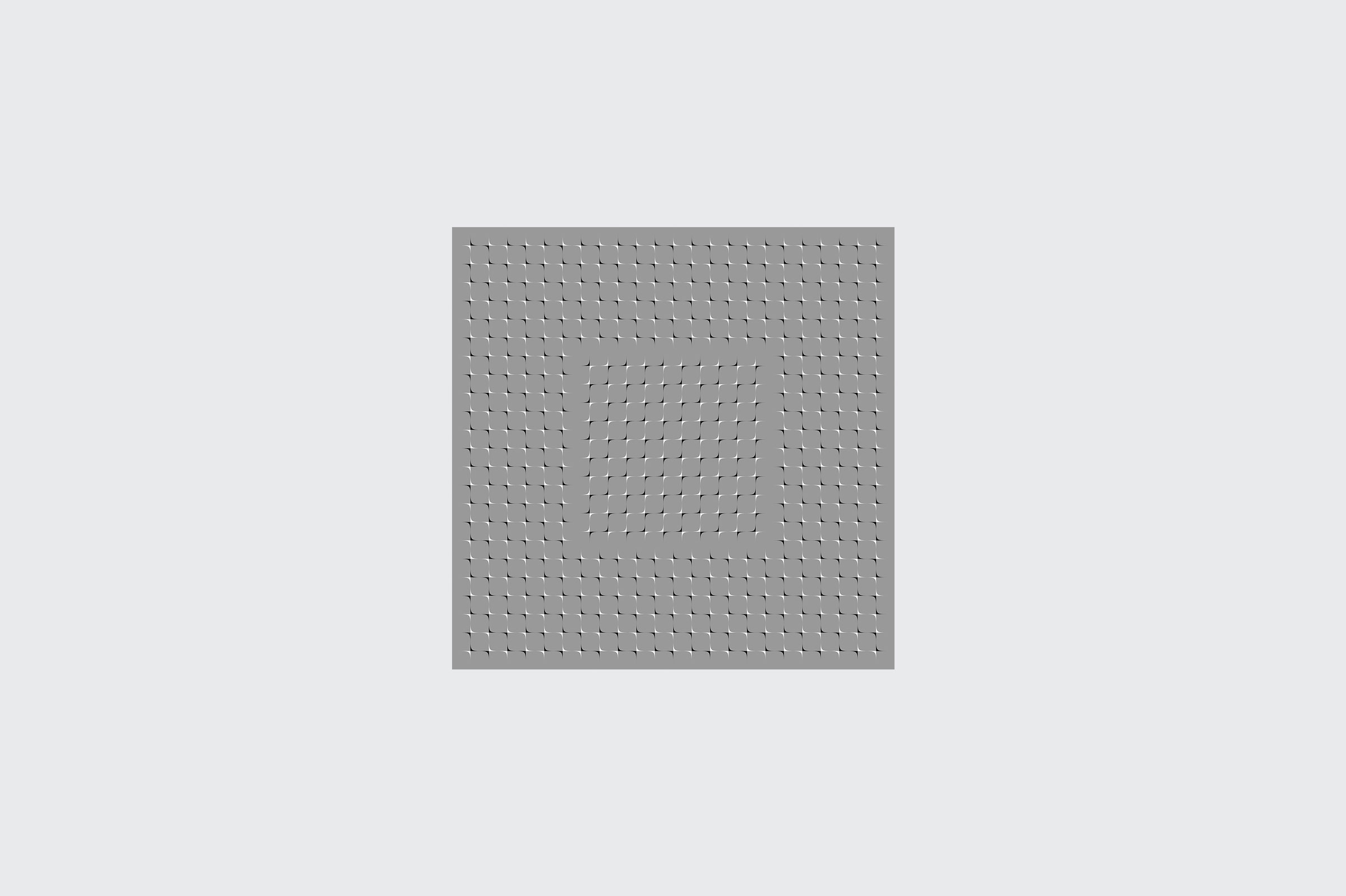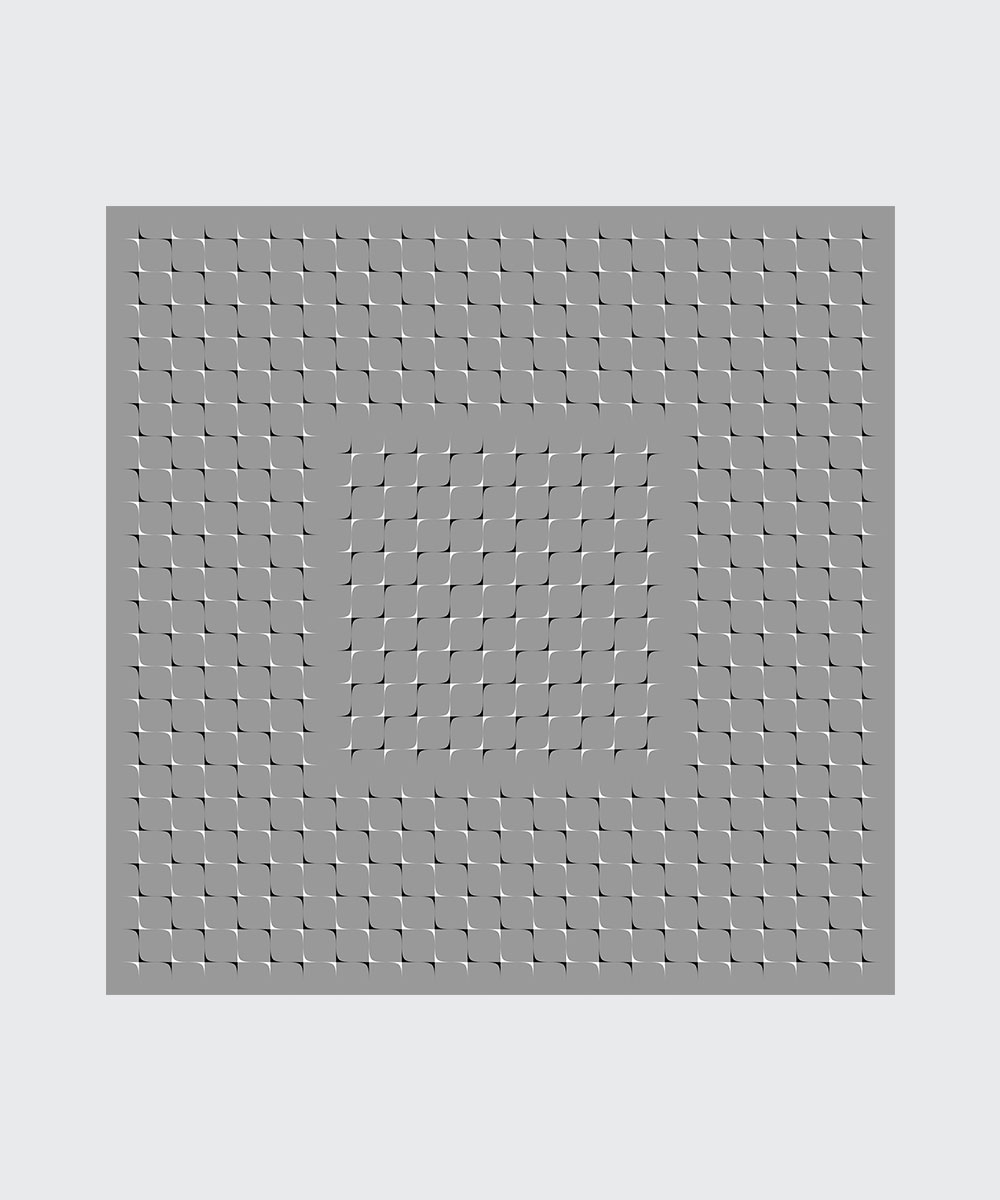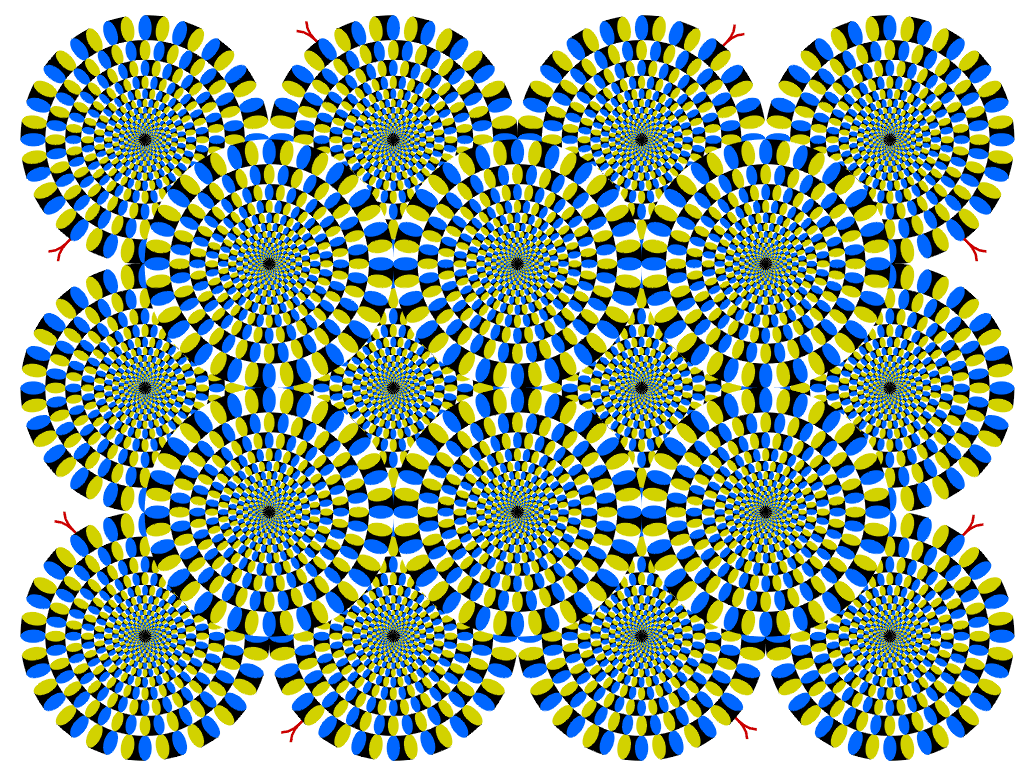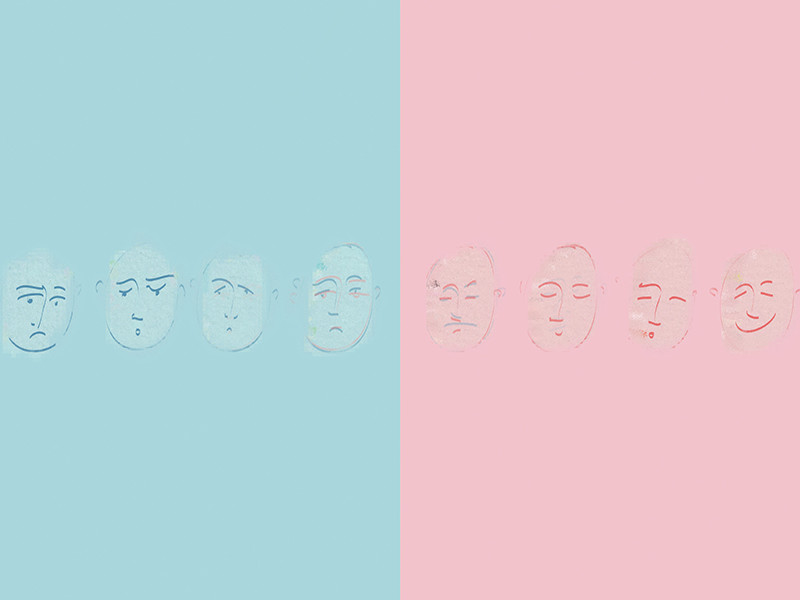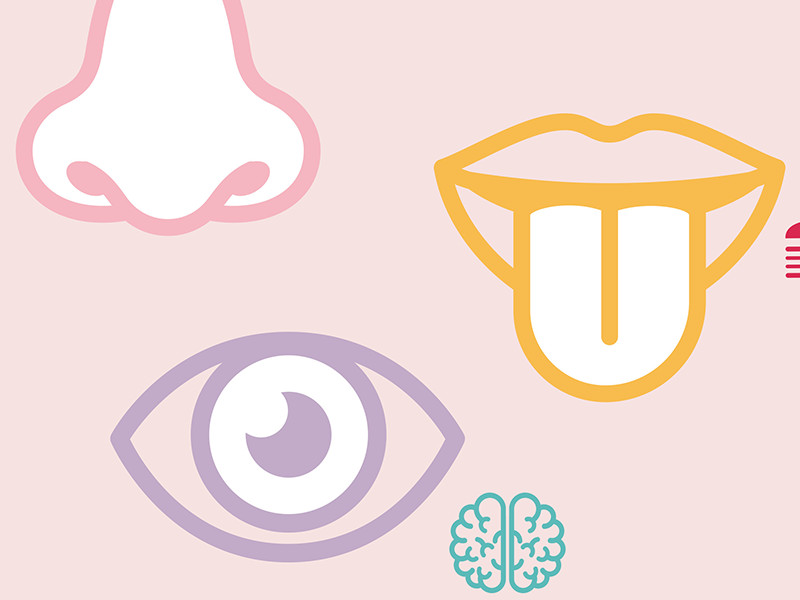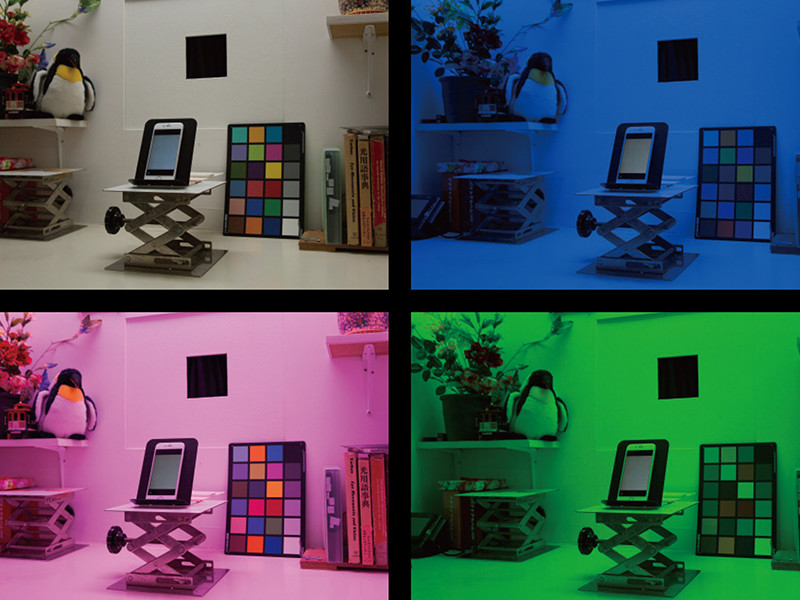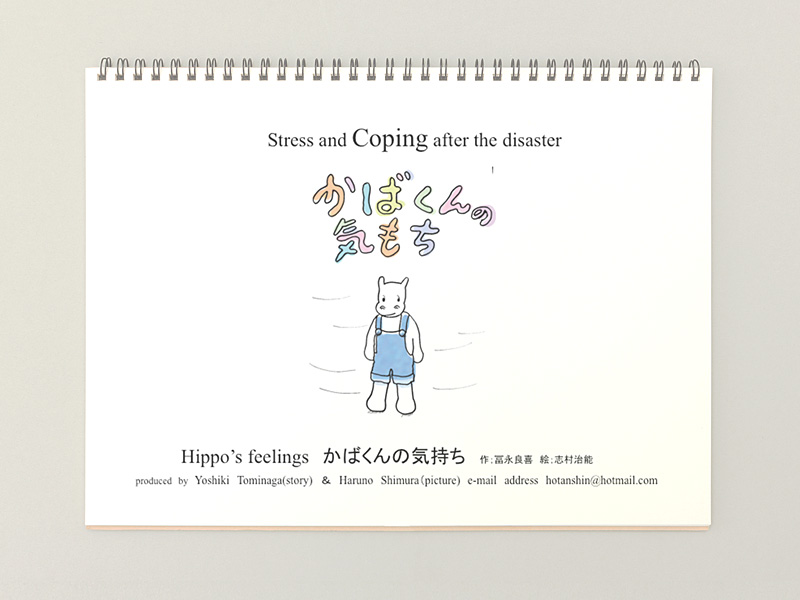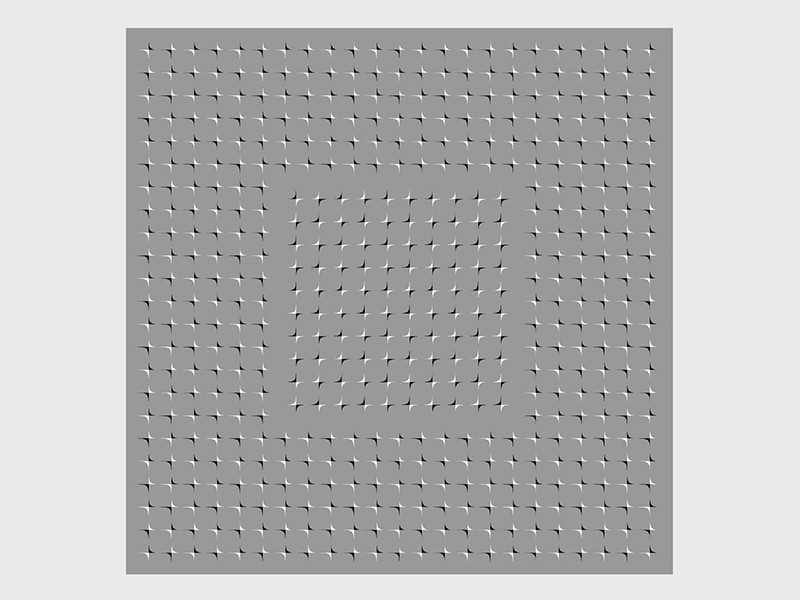STORY #10
Visual Illusions and the Mysteries of Human Perception
Akiyoshi Kitaoka
Professor, College of Comprehensive Psychology
Seiichi Tsuinashi
Assistant Professor, College of Letters
Research on visual illusions gives insights into neuroscience or engineering
“Illusion is a perception or cognition that differs from the veridical property of an object. Visual illusion refers to visual misperception.”
With these remarks, Akiyoshi Kitaoka, who is among the most prominent researchers of optical illusion, began his explanation. Kitaoka’s work explores the mysteries of human perception, with a focus on optical illusions, from the field of perceptual psychology.
According to Kitaoka, there has been a long history of optical illusion research, as seen in images and geometric designs that use illusions. At present, with the advancement in perceptual psychology and neuroscience, great progress has been achieved on this subject.
One example of an optical illusion is called the tilt illusion, where two parallel lines appear sloped or tilted. Certain prime examples are the Fraser illusion and Café Wall illusion (Münsterberg illusion). Kitaoka analyzed these structures and proposed that they be grouped together under the term Fraser illusion group.
“Fraser optical illusion is a type of illusion that makes two parallel lines look tilted. This is the type of optical illusion that when a diagonal line is drawn to intersect with a perpendicular one, the latter would look like it is tilted in the same direction as the former. Similar illusion is also observed when two tilted edges meet,” explained Kitaoka. He said that all Fraser optical illusions can be classified into three categories: the line type combines lines with different contrasting brightness and darkness; the edge type combines edges of different phases of brightness or darkness; and the mixed type combines the four elements of lines and edges of differing brightness and darkness. The Café Wall illusion combines black and white rectangular rows with a gray horizontal line; under a certain condition, the gray horizontal line looks as though it is tilting up to the right. Kitaoka demonstrated how this illusion can also be included in the Fraser optical illusion group.
Additionally, Kitaoka found that these tilt illusions also often tend to be characterized as an optical illusion where the still image appears to be in motion. “The primary visual cortex of our cerebrum has neurons that operate based on direction and motor selectivity. I thought that, perhaps, these neurons might be involved,” Kitaoka explained. As such, Kitaoka created the drifting spines illusion (see left page image) using the four basic elements of the Fraser optical illusion group. He demonstrated how this illusion can be explained based on the qualities of the four-stroke apparent motion. The current assumption is that most optical illusions occur not in the retina but within the cortical mechanism. Among Kitaoka’s research findings is the estimated location of where optical illusions occur in the brain.
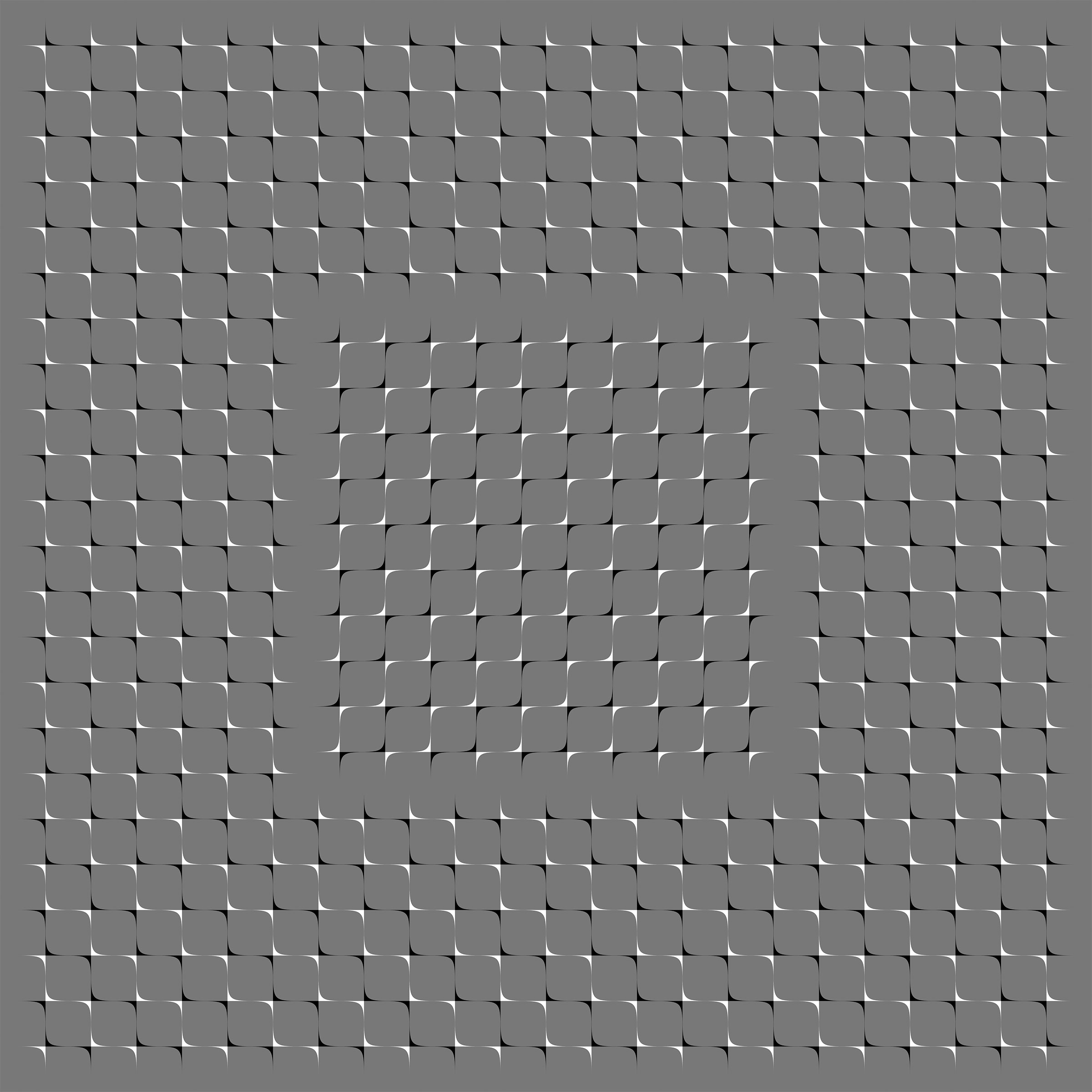

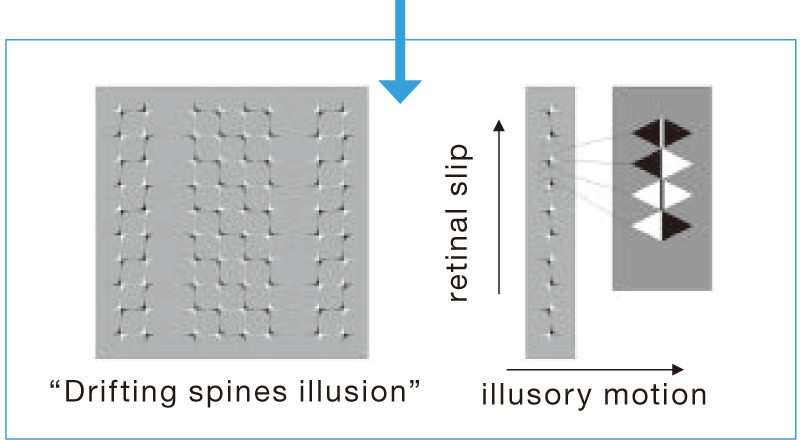
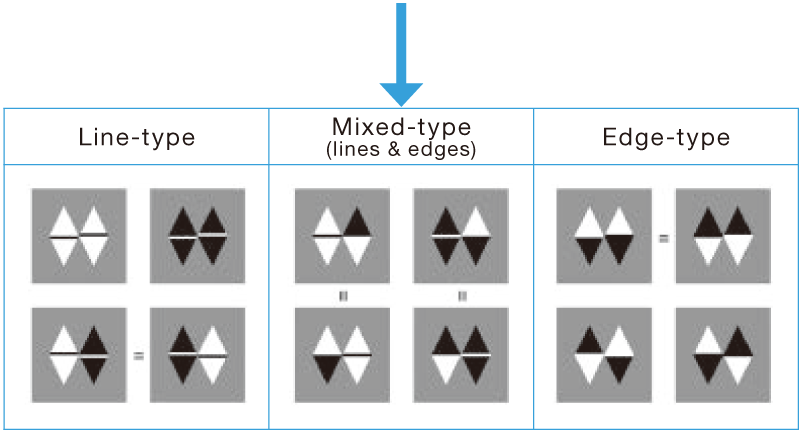
The drifting spines illusion (above) is a new tilt illusion and illusory motion where still images appear to be in motion. The diagram describes its illusory motions by breaking the image down into the four-stroke apparent motions (bottom left). According to Kitaoka, the Fraser optical illusion group can be explained in three types, which use the difference in the elements of lines, edges, and their combinations (bottom right). The drifting spines illusion is considered a mixed type.
Fraser-Wilcox illusion is another optical motion illusion observed in a still image. This illusion makes the pattern appear as if it is moving from a dark-to-light or light-to-dark direction when the surface of a luminous gradient is arranged in a sawtooth wave. Kitaoka used this principle to create a unique optical illusion called the Rotating snakes. In addition, he also created an optical illusion of a moving heart, by utilizing the fact that the brain’s processing speed changes based on the luminous gradient. “The brain’s processing speed accelerates with high contrast, and slows down with low contrast. As such, our perception will have a time lag in that we see the part that has high luminance first; thus, when you move the image, the heart appears as if it is moving.”
Colors are also a major part of illusions. The color constancy illusion is an example. When looking at an image of a strawberry with cyan (blue-green) pixels, the strawberry appears to be red, even though it does not have red pixels. This is the brain’s way of color correcting images that are filtered through a different light. In addition to this, Kitaoka created an optical illusion called the color dependent illusory motion and explained its mechanisms.
The Fraser–Wilcox Illusion: Rotating Snakes[Zoom]
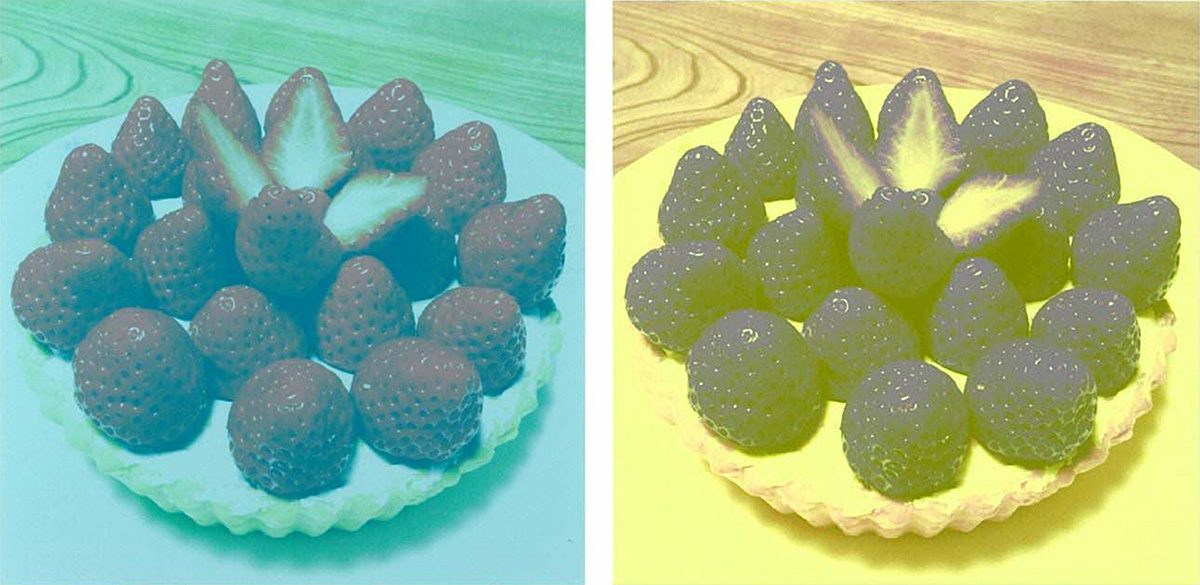
Color constancy Illusion. One can see red strawberries, although there are no red pixels (left), and one can see blue strawberries, although there are no blue pixels.
Such insights gained from optical illusion studies can be applied to the fields of, among others, medicine and welfare, construction, transportation, and environmental design, which have practical application in society,” Kitaoka said. For example, in trying to contribute to alleviating traffic issues using optical illusions, Seiichi Tsuinashi developed a measure that relieves traffic congestion using a visual illusion of a vertical gradient.
“It is a popular fact that traffic jams tend to occur near the sag portion where the downhill road ends and then turns into an uphill road. This is because as the longitudinal change from downhill to uphill happens gradually, the drivers do not realize that they will go on an uphill road and must step on the gas pedal,” Tsuinashi explained. The fact that the driver can see the road rising into the distance may also be a contributing factor, he added. Tsuinashi focused on the sag section of an actual highway, and examined the effect of the visual illusion of a vertical gradient that would cause the drivers to perceive that the gradient of the incline in the road ahead is steeper than the present condition. He used a scaled model of the hill to examine the type of surrounding visual environment, the gradient, the tilting of the parallel patterns on the side of the walls, the height of the wall, and the tilting of the horizontal and perpendicular patterns that intersect one another. All these factors were expected to impact the visual illusion of the longitudinal gradient of the road. Based on these insights, he believed that a sloped horizontal pattern must be drawn on the side walls at the sag section, to counter and alter the illusion of the gradient road, thereby alleviating traffic jams.
Such studies are just beginning to reveal the hitherto largely untapped benefits of visual illusion research, demonstrating its potential to contribute to a wide range of science or technology in the future.
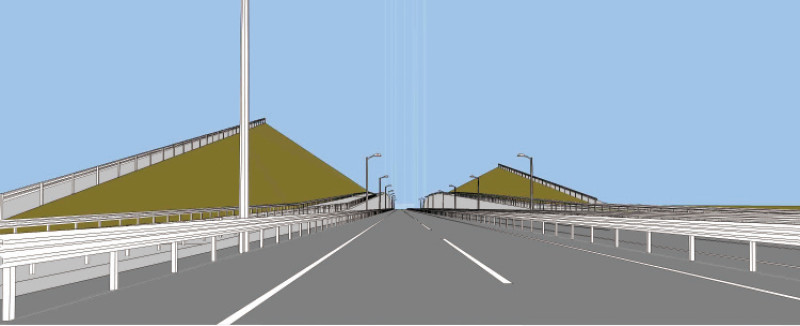
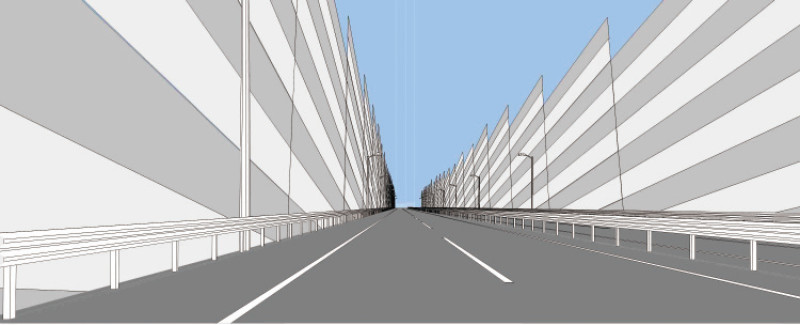
A simulation of the longitudinal gradient illusion (right) placed between the Anagawa Higashi Interchange and the Kaizuka Interchanges on Tokyo-bound Keiyo Road; Sidewalls that depict the tilted lateral stripe were placed to create the illusion. The road incline appears steeper when compared with the road side with no walls (left).
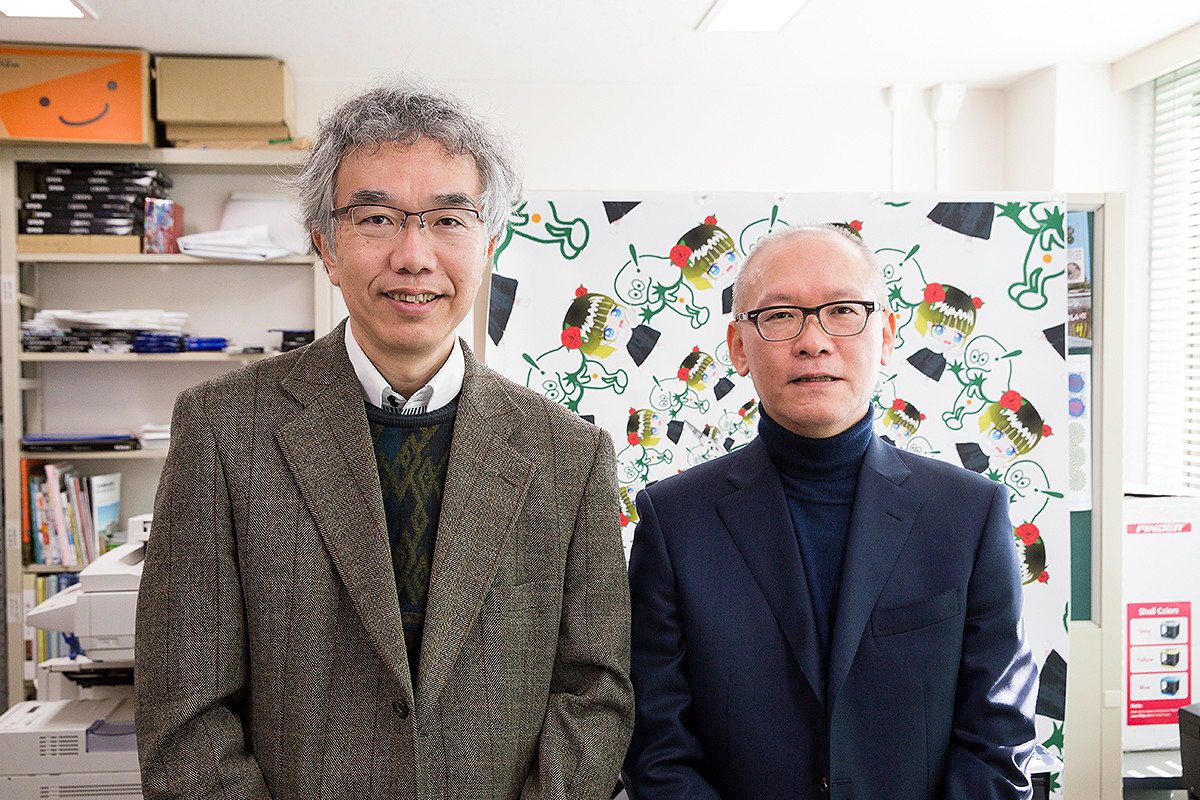
Akiyoshi Kitaoka(Left)
Professor, College of Comprehensive Psychology
Research Subjects: tilt illusion, color illusion, phenomenological or psychophysical study on visual illusion, visual phantoms, motion illusion in still images
Research Keywords: experimental psychology
Seiichi Tsuinashi(Right)
Assistant Professor, College of Letters
Research Subject: study of slope perception
Research Keywords: experimental psychology
